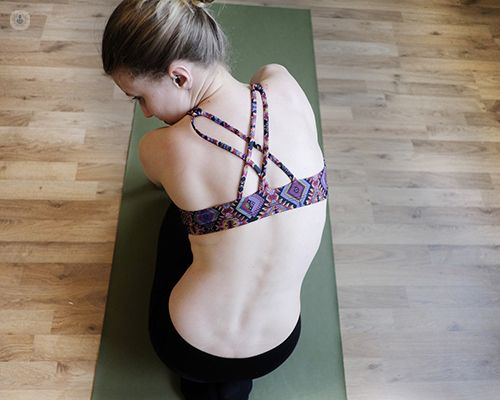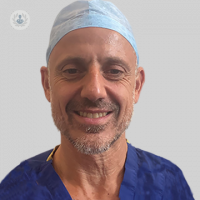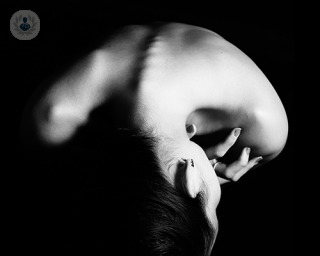Chordoma
Mr Sinan Barazi - Neurosurgery
Created on: 04-17-2019
Updated on: 08-17-2023
Edited by: Carlota Pano
What is chordoma?
A chordoma is a rare type of primary bone cancer that can develop in the bones of the spine or at the base of the skull. It forms from small remnants of cells in the embryo that develop into the discs of the spinal column.
It is part of a group of malignant bone and soft tissue tumours known as sarcomas. These are the most common tumour of the sacrum (the bottom of the spine) and the cervical spine. A chordoma usually occurs between ages 50-70 but can be seen at any age.

What causes chordoma?
When a baby is in the womb, they have a thin bar called a notochord that runs along their back. This bar supports the bones of the spines as the baby grows, and disappears before the baby is born.
In rare cases, notochord cells are left behind in the spine and skull. The chordoma starts when there is a change in the gene that carries instructions for making a protein, which helps the spine form. The cells that are left in the brain or spinal cord then divide too quickly, causing chordoma.
What are the symptoms of chordoma?
Symptoms of chordoma may depend on the position of the tumour, which is usually slow-growing. The most common signs are pain and neurological changes.
Signs of skull base chordomas include:
- headache
- neck pain
- double vision
- changes in voice or speech
- difficulty in facial sensation or movement
- difficulty swallowing
The symptoms of chordomas of the spine may include:
- changes in bowel/bladder function
- pain, aching, tingling, and/or numbness of the arms and legs
- a lump
How is chordoma diagnosed?
The tumour is detected through imaging tests that show organs and other structures in the body. The patient will need magnetic resonance imaging (MRI) for the doctors to make a diagnosis and plan for treatment. The MRI can detect how the chordoma is affecting the tissue around it, including the muscles and nerves. The entire spine will be checked to see if the tumour has spread.
If it is not certain whether the tumour is chordoma, the patient will need to have another imaging test called a computerised tomography (CT) scan. This scans the chest, abdomen, and pelvis to ensure that the tumour has not spread. A radiologist will make the test.
A pathologist can make a definitive diagnosis by evaluating tissue samples to diagnose the bone tumour. The pathologist will test for the presence of a protein called brachyury in the tumour, as most chordomas have high levels of this, which makes it helpful for diagnosis.
How is chordoma treated?
Treatment of chordoma depends on the patient’s age and health, and the size of the tumour and where it is located.
A neurosurgeon or spinal surgeon will remove the tumour with surgery and take out as much of the tumour as possible and the surrounding tissue. In some cases, the whole tumour cannot be removed and therefore, radiation is used to kill any cancer cells that are left behind after surgery.
Chordoma often comes back after treatment. Following surgery, the doctor will check the patient with an MRI every three months to check that it has not returned.


